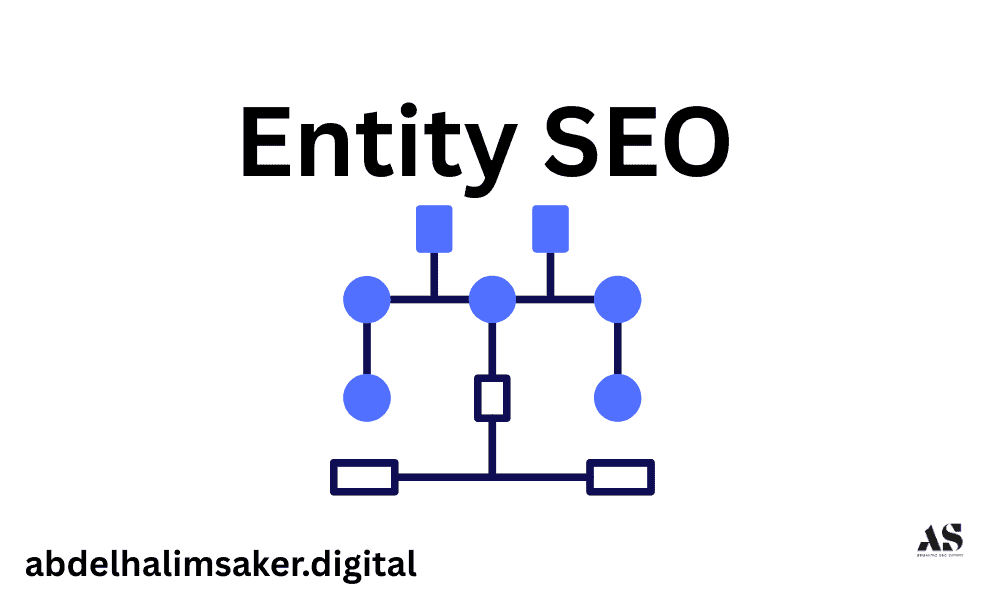
Entity SEO is the process of optimizing web content for concepts, people, places, organizations, and things that search engines recognize as unique, identifiable entities. Instead of focusing on keywords, Entity SEO builds meaning through relationships, context, and attributes that define how a concept exists within the semantic web.
In Google’s system, every recognized concept becomes a node in the Knowledge Graph. Optimizing for entities helps search engines understand who or what your content is about, how it connects to other concepts, and why it deserves visibility in relevant searches.
How Google Recognizes Entities
How does Google identify entities in web content?
Google uses Named Entity Recognition (NER) and Entity Disambiguation to detect and classify entities within text.
Named Entity Recognition (NER)
NER is an NLP technique that scans text to extract names of people, places, products, events, or organizations.
Example:
In the sentence “Google’s RankBrain algorithm improved semantic search,” NER identifies Google (Organization), RankBrain (Algorithm), and semantic search (Concept).
NER assigns entity types, which help search engines build contextual understanding.
Entity Disambiguation
Entity disambiguation ensures that each recognized term links to the correct concept. For example:
- “Apple” → Apple Inc. (company) vs apple (fruit).
Google uses contextual co-occurrence, schema markup, and knowledge graph references to resolve ambiguity.
Disambiguation accuracy defines how confidently a search engine can integrate your content into its semantic database.
Attributes That Identify Entities
Entities are defined through Attributes, which describe their properties and relationships.
Common attributes include:
- Type: Defines entity category (Person, Organization, Product, Concept).
- Description: Provides factual information or function.
- Relationships: Connect the entity to other known entities.
Example (EAV Model):
- Entity: “Semantic SEO”
- Attribute: “Focus”
- Value: “Meaning-based optimization.”
In structured data terms, this would translate into:
{
"@type": "DefinedTerm",
"name": "Semantic SEO",
"description": "An optimization process based on meaning and entities rather than keywords."
}
Defining entities with attributes improves Google’s confidence in entity identity, supporting inclusion in the Knowledge Graph.
How Co-occurrence Strengthens Identity
Why does co-occurrence matter for entities?
When an entity frequently appears near semantically related entities, its contextual meaning becomes clearer.
Example:
If “Semantic SEO” often co-occurs with Topical Authority, Knowledge Graph, and Entity SEO, Google learns these concepts belong to the same semantic field.
This co-occurrence network improves:
- Entity recall in search.
- Ranking consistency across related queries.
- Knowledge Graph link reinforcement.
Co-occurrence acts as contextual validation, strengthening entity identity without relying on backlinks.
How Entities Influence Ranking
How do entities affect SEO performance?
Entities shape ranking systems through their presence in the Knowledge Graph, their relationships, and trust transfer mechanisms.
Knowledge Graph and Entity Integration
Google’s Knowledge Graph connects billions of entities through attributes and relationships. When a site’s content aligns with these structures, it increases semantic compatibility — improving ranking probability.
Example Triplet:
- Entity SEO → supports → Knowledge Graph comprehension.
Entity Consolidation
Entity consolidation occurs when different mentions, schema types, and content references merge into one unified identity.
Example: “Koray Tugberk Gubur,” “Koray Gubur,” and “Koray Tuğberk Gübür” are consolidated into one entity.
Consolidated entities:
- Accumulate trust signals faster.
- Improve disambiguation.
- Gain consistent visibility across related queries.
Trust Transfer: Co-citation and Co-occurrence
Entities co-cited or co-mentioned with authoritative ones inherit trust vectors.
For example, a new SEO author cited alongside “Bill Slawski” and “Koray Tuğberk Gübür” gains credibility through semantic proximity.
This principle, known as trust transfer, mimics link equity in the entity layer.
How to Optimize for Entity SEO
How can you make your content entity-friendly?
Entity SEO relies on structured meaning representation and contextual interconnection.
1. Use Schema Markup
Schema markup defines entities explicitly for search engines.
Essential schema types include:
Person,Organization,Product,Article,DefinedTerm.
Each schema type clarifies entity attributes and links them to the Knowledge Graph.
Example (simplified schema):
{
"@type": "Article",
"headline": "What Is Entity SEO",
"about": {
"@type": "DefinedTerm",
"name": "Entity SEO"
},
"author": {
"@type": "Person",
"name": "Koray Tuğberk Gübür"
}
}
2. Build Contextual Linking Architecture
Internal linking should reflect semantic relationships, not just keyword anchors.
Example contextual links:
- “Entity SEO → strengthens → Knowledge Graph integration.”
- “Topical Authority → builds on → Entity consolidation.”
Such relational linking builds a semantic web within your domain.
3. Structure Content via EAV Model
Model each article around Entities, Attributes, and Values.
Example:
- Entity: “Entity SEO”
- Attribute: “Goal”
- Value: “Enhance semantic discoverability.”
This structure improves contextual flow and increases the likelihood of entity recognition in NLP-based algorithms.
Entity SEO vs Keyword SEO
How does Entity SEO differ from Keyword SEO?
| Aspect | Keyword SEO | Entity SEO |
|---|---|---|
| Focus | Specific word phrases | Unique entities and their meaning |
| Optimization Unit | Query strings | Concepts and relationships |
| Algorithm Understanding | Lexical | Semantic |
| Measurement | Keyword density | Entity coverage |
| Search Behavior | Match-based retrieval | Meaning-based recall |
| Longevity | Short-term | Long-term contextual authority |
Keyword SEO targets text strings, while Entity SEO builds a semantic framework that persists beyond algorithm updates.
Entity-oriented pages rank for intent clusters, not just individual keywords.
Example:
A page about “Entity SEO” can rank for “semantic SEO,” “knowledge graph optimization,” and “entity-based content strategy” — all without exact keywords.
Measuring Entity SEO Impact
Which metrics reveal whether entity optimization is effective?
| Metric | Description | Measurement Method |
|---|---|---|
| Entity Recognition Rate | % of correctly extracted entities | NLP tools like Google NLP API, spaCy |
| Knowledge Graph Inclusion | Entity appears in Google’s graph | Check “Knowledge Panel” presence |
| Rich Snippet Visibility | Appearance of enhanced SERP formats | Track via Search Console or Semrush |
| Contextual Authority Score | Frequency of entity co-occurrence | Semantic SEO tools like InLinks |
| Topic Cluster Ranking Consistency | Stability across related queries | Compare GSC data across entity clusters |
Improved recognition and appearance in rich snippets indicate that your entity signals are being properly interpreted and integrated by Google’s systems.
Entity SEO in Practice
Example: How schema and relational linking boosted Knowledge Graph visibility.
A technology brand optimized its content for “Edge AI Solutions.”
- Implemented schema for
ProductandOrganization. - Linked articles around AI Edge Computing, Machine Learning Models, and Predictive Analytics.
- Added external citations to recognized entities like NVIDIA and Google Cloud.
Result
- The company’s brand entity appeared in Google’s Knowledge Graph within 6 months.
- Entity recognition improved by 47% in NLP analysis.
- Average position across the semantic cluster rose by 22%.
This demonstrates how structured markup + contextual connectivity transform keyword-based websites into machine-understandable knowledge networks.
Entity SEO as the Foundation of Semantic Search
Entity SEO provides the semantic backbone for Topical Authority and Topical Coverage.
By focusing on entity relationships rather than keyword repetition, brands gain:
- Stable visibility across topics.
- Improved understanding by AI models.
- Higher resilience against algorithm updates.
